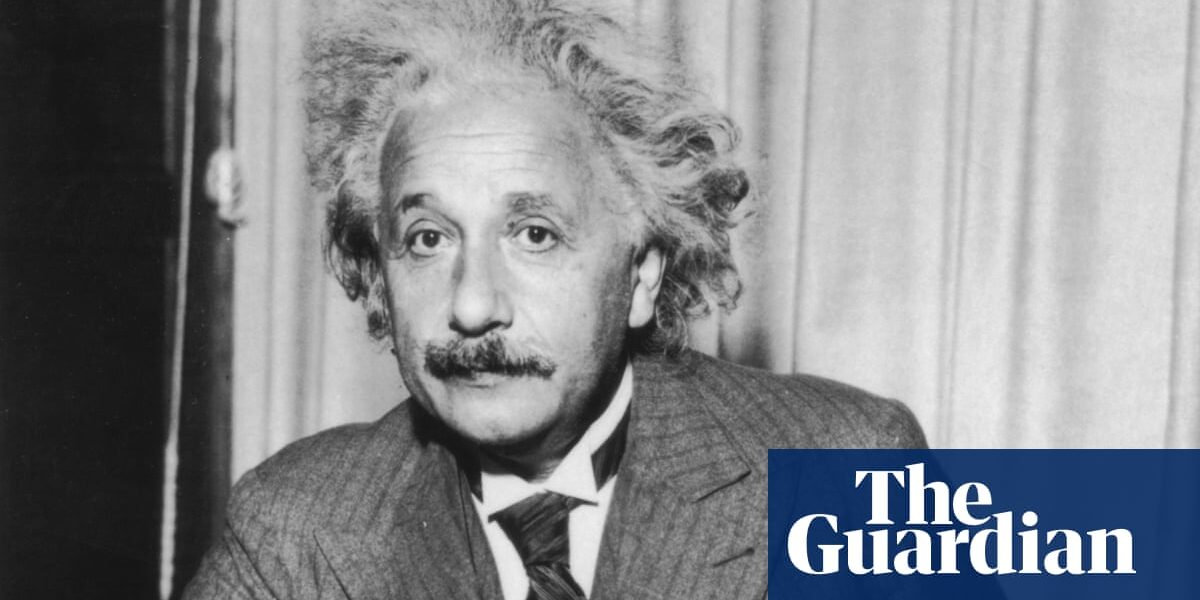
A two-page letter written by Albert Einstein warning Franklin D Roosevelt – then the president of the US – that Nazi Germany might harness nuclear research to invent an atomic bomb is going up for sale at Christie’s auctioneers in September with an estimate value of $4m.
Einstein’s letter – one of two the theoretical physicist drafted in a cabin on the north shore of New York’s Long Island with a fellow scientist, Leo Szilard – warned that the German government was actively supporting nuclear research and could make “extremely powerful bombs” like the kind that were eventually deployed by the US at the end of the second world war.
He urged the US government to do the same. And Roosevelt responded by forming a committee that was a forerunner to the J Robert Oppenheimer-headed Manhattan Project which built the bombs that were dropped over Hiroshima and Nagasaki in Japan, ending the second world war and ushering in the nuclear age.
The letter that the father of the theory of general relativity about space and time sent to the president is at the Roosevelt library and museum in Hyde Park, New York. But the second version – signed and slightly shorter – is being sold off by the estate of the late Microsoft co-founder Paul Allen.
Allen, a kind of magpie collector who amassed a collection of art that was recently sold off at Christie’s for $1.6bn as well as almost anything pertaining to Jimi Hendrix, purchased the letter from publisher and third-party presidential candidate Malcolm Forbes in 2002 for $2.1m. The Wall Street Journal said that was the first 20th-century historical document to top $1m.
Forbes had previously acquired it from the estate of Szilard.
Christie’s has a history with Einstein memorabilia. It previously sold the physicist’s so-called God Letter – in which he wrote that “the word God is for me nothing but the expression and product of human weakness” – for almost $3m in 2018.
But the letter is unlikely to break the $13m record set in 2021 for one of the few surviving records detailing his theory of general relativity.
With the market for visual art under stress, the auction house anticipates that the market for historical artefacts could attract bidders, especially one as prescient to current concerns about a new, three-way nuclear arms race between the US, Russia and China, alongside the success of last year’s Oscar-winning Oppenheimer biopic.
Marc Porter, chairman of Christie’s Americas, told the Journal that Allen “undoubtedly knew it was one of the most important documents in the history of the 20th century, and that’s not the kind of thing you just hang in your office”. Allen, he said, had stored the letter carefully and away from sunlight.
The letter, dated 2 August 1939, less than a month before Germany invaded Poland, begins, “Sir: Recent work in nuclear physics made it probable that uranium may be turned into a new and important source of energy.”
In the letter that was sent to Roosevelt, Einstein wrote: “It may be possible to set up a nuclear chain reaction in a large mass of uranium … and this new phenomenon would also lead to the construction of bombs.”
Nuclear reaction is currently on the mind of Allen’s Microsoft partner Bill Gates, who recently announced he was prepared to invest billions into a next-generation nuclear power plant project in Wyoming.
Gates told CBS’s Face the Nation that his startup TerraPower expected to complete the new reactor that uses liquid sodium instead of water as a coolant in 2030. “I put in over a billion, and I’ll put in billions more,” Gates said.
That comes as companies like Microsoft and Google have expressed interest in a new generation of nuclear power plants to meet escalating demands for power to run data-storage centers that is expected to dramatically increase.
The International Energy Agency has estimated that global electricity demand from AI, data centers and crypto will at minimum rise to 800TWh, or terawatt hours, in 2026, a nearly 75% increase from 460TWh in 2022.
Source: theguardian.com

